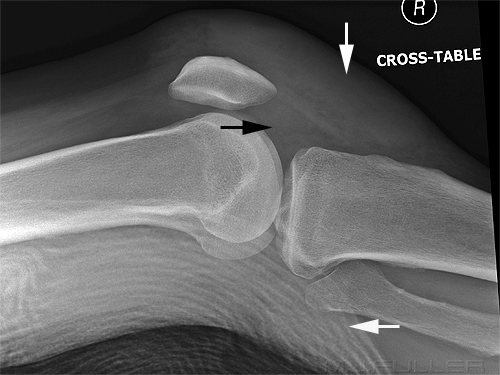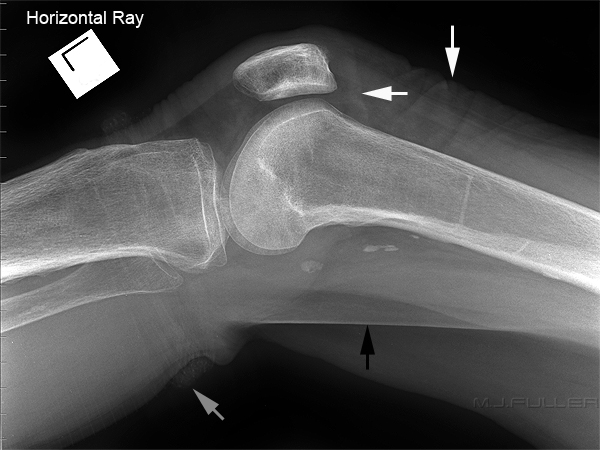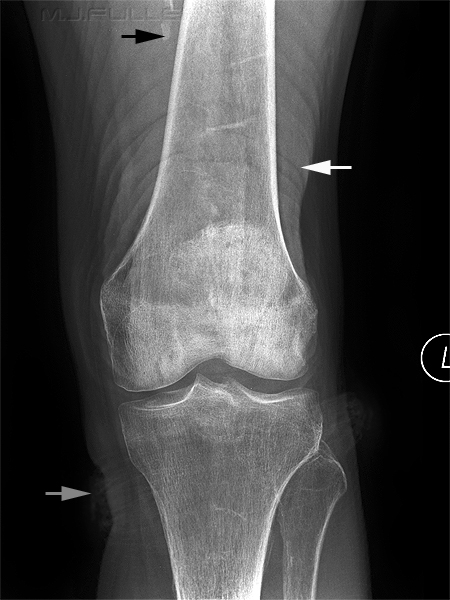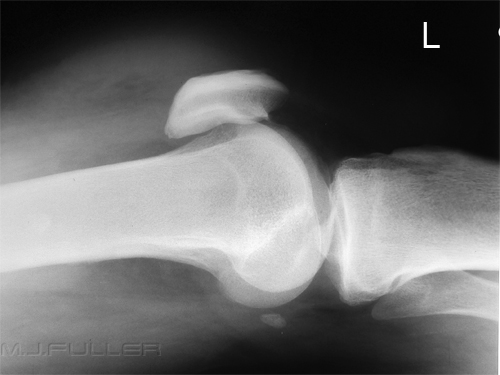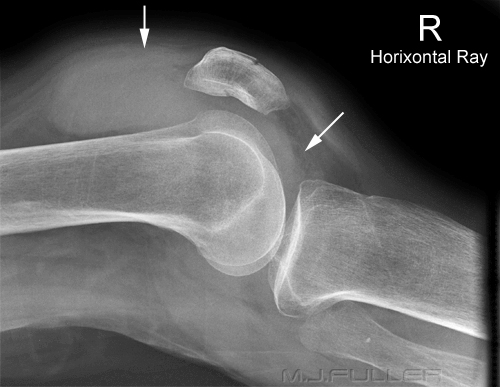Knee: non-trauma soft tissue signs and artifacts
Jump to navigation
Jump to search
Prepatellar Bursitis
Varicose Veins
This is largely an incidental finding. Varicose veins can produce a distracting and confusing appearance to the uninitiated.
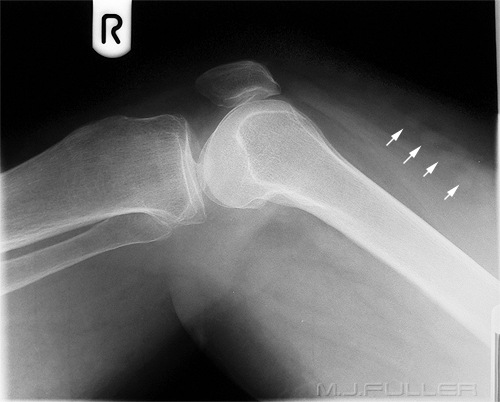
These varicose veins appear to hang down like grapes on a vine.
The Blanket Artifact
In an act of desperation radiographers will roll up a blanket and use it as a support for the lateral horizontal ray knee projection. The result is commonly less than ideal as shown below
Skin folds, Socks, Vascular Calcification and other Points of Interest
This image demonstrates a potpourri of artifacts.
The black arrow points to vascular calcification
The white arrow identifies skin folds (the patient may have lost weight recently)
The grey arrow points to the patient's sock
Prepatellar Bursitis
Popliteal Artery Aneurysm
The arrowed soft tissue structure was an incidental finding in a trauma patient.
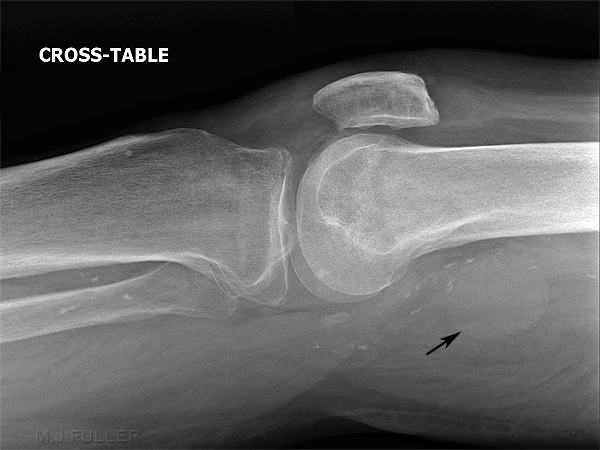
The arrowed soft tissue structure may be a popliteal artery aneurysm (unproven) The patient's age, sex (male), the site of the lesion and the evidence of atherosclerosis support the diagnosis.
"Popliteal artery aneurysms are the most common peripheral artery aneurysms, comprising 70% to 85% of the total aneurysms in the periphery.1-3 More than 95% of peripheral artery aneurysms occur in males, and the average age of patients at presentation is 65 years. Atherosclerosis appears to be the etiology in more than 90% of cases. The true pathogenesis behind popliteal artery aneurysm formation is not known, and factors such as turbulence distal to the relative stenosis at the tendinous hiatus of the adductor magnus and repeated flexion at the knee have been postulated; this does not, however, account for the association with aneurysms in other locations or the male preponderance. Most popliteal artery aneurysms are fusiform and are bilateral in 25% to 70% of cases." <a class="external" href="http://www.evtoday.com/AAA/2003+Files/Popliteal+Artery+Aneurysms.html" rel="nofollow" target="_blank">Source http://www.evtoday.com/AAA/2003%20Files/Popliteal%20Artery%20Aneurysms.html</a>
